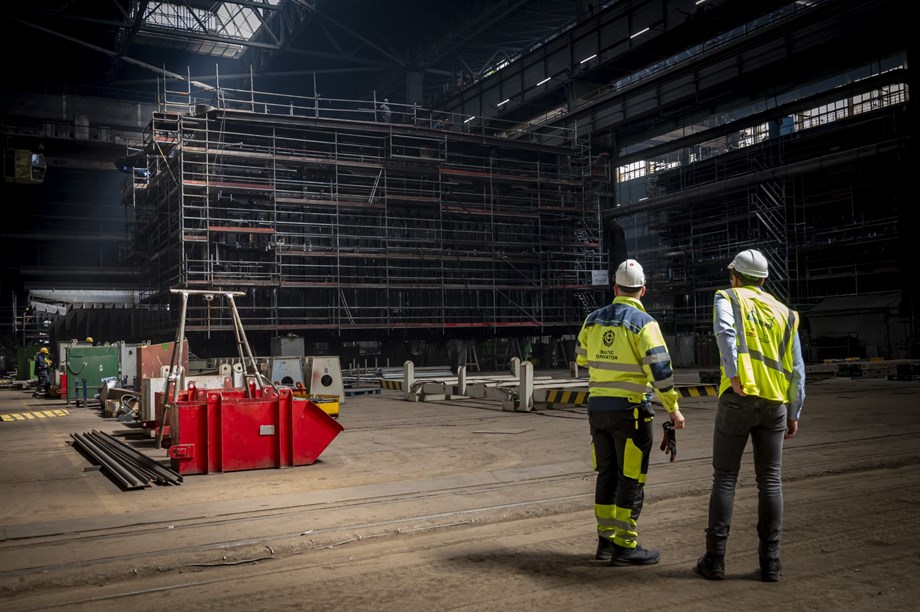Thursday, July 25, 2024
Manufacture of key components for Baltic Power wind farm based locally in Pomerania

In preparation for the offshore installation works scheduled for the end of this year, some critical components of the Baltic Power project are currently under production. Key infrastructure, including substations for evacuating power from the offshore turbines and transmitting it to the mainland, is being constructed in the seaside region of Pomerania. Other important project components are also being manufactured in Szczecin, Kluczbork, and Żary, among other locations.
The target proportion of locally sourced supplies for Baltic Power, a collaborative venture between the ORLEN Group and Northland Power, is in excess of 20% of the project’s lifecycle value, spanning 25-30 years. This represents the highest local content among all offshore wind energy projects currently underway in Poland.
“Baltic Power is our flagship energy transition project. Facilitating a permanent shift in our energy mix, the new offshore wind farm will also foster the development of a new industrial sector in Poland. Consequently, we are dedicated to maximising both the extent to which local businesses are involved in the project and utilisation of the ORLEN Group’s expertise throughout the maintenance phase. Baltic Power is a trailblazing project, paving the way for understanding and refining collaboration with local suppliers. We intend to apply the insights gained from this project to future offshore ventures,” said Ireneusz Fąfara, CEO and President of the Management Board of ORLEN S.A.
A crucial aspect of the Baltic Power project includes the construction of two offshore substations in Gdańsk and Gdynia, to be situated 23 kilometres off the coast. These stations will receive power generated by the 76 turbines, increasing the voltage before transmitting it via subsea and land cables to an onshore substation located approximately 7 kilometres inland. Ultimately, the wind-derived power will be fed into the national grid, supplying electricity to more than 1.5 million households.
Each offshore substation comprises two primary components: the foundation and superstructure, known as the topside. A fully equipped topside will weigh approximately 2,500 tonnes and have dimensions of 20 x 30 x 40 metres, resembling a 4-5 storey residential building. Despite their considerable size and weight, the substations will be constructed and outfitted on land before being installed at sea using Gulliver, the specialist vessel for installing offshore infrastructure. Once in place, both structures will rise about 40 metres above sea level on foundations having 9 metres in diameter and 80 metres in length. The contractors engaged for their construction are Baltic Operator Gdańsk-Gdynia and Energomontaż-Północ Gdynia.
Other key components to be sourced from the Polish market include foundation parts for the substations produced in Szczecin, and OSS boom cranes manufactured by a company in Kluczbork. In addition, turbine foundation components are under construction at plants in Żary, Łęknica, Niemodlin and Czarna Białostocka, while the subsea and land cables are being produced at a factory in Bydgoszcz. Polish firms are also handling construction work on the maintenance base at the Port of Łeba and the onshore receiving substation in Choczewo.
“The production of offshore substations is well advanced, daily involving several hundred workers. This work will provide invaluable experience for the entire sector, demonstrating Poland’s capability to locally produce critical wind farm components. The manufacture of steel structures for offshore stations is a notable strength of Polish shipyards, presenting an opportunity for these facilities to specialise and integrate into European supply chains, given especially the potential pipeline of 10 more wind farms to be constructed in Poland, with a combined capacity in excess of 10 GW,” said Jarosław Broda, Member of the Management Board of Baltic Power.
Baltic Power stands as the most advanced offshore wind project in Poland and the largest renewable energy investment undertaken in Central Europe. It will be among the first wind farms globally to feature 15 MW turbines and the one pioneering significant utilisation of low-emissions steel for the manufacture of wind turbine towers. Upon completion in 2026, Baltic Power is projected to meet up to 3% of Poland’s electricity demand and reduce CO2 emissions by approximately 2.8 million tonnes annually.
SEE ALSO

Thursday, November 13, 2025
Baltic Power project – a joint venture of ORLEN Group and Northland Power - confirmed successful installation of the first three 15 MW turbines consisting of nacelles manufactured at Vestas’ facility in Szczecin. Installation of these nacelles marks a pivotal moment for the development of local content at the emerging Polish offshore wind industry. In total, 76 turbines will be installed on the Polish waters of the Baltic Sea with several nacelles coming from the Western-Pomeranian factory.
MORE

Wednesday, October 29, 2025
Both offshore substations installed at Poland’s first offshore wind farm – Baltic Power
Baltic Power offshore wind farm – a joint venture project of ORLEN Group and Northland Power – completed installation of both offshore substations. These four-story structures gather energy generated by 76 wind turbines to transfer it to the onshore infrastructure. The topsides of the substations were manufactured at local shipyards in Gdańsk and Gdynia.
MORE

Tuesday, October 28, 2025
In line with its strategy, ORLEN is consistently expanding low- and zero-emission generation capacities, materially strengthening the energy security of Poland and the wider region. A key pillar of these efforts is investment in offshore wind. To advance these projects, the Group has secured PLN 3.5 billion from the National Recovery Plan (KPO) under agreements signed with Bank Gospodarstwa Krajowego (BGK).
MORE

Monday, July 7, 2025
Baltic Power project, a joint venture between ORLEN Group and Northland Power, confirmed the first successful installation of the first 15-MW offshore wind turbine. In total 76 turbines will be installed at the Poland’s first offshore wind farm, estimated to cover 3% of national electricity demand. Commissioning is expected in 2026.
MORE